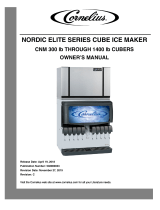
3
Welcome to Follett Corporation ............................................................................................................................ 4
Speci cations ......................................................................................................................................................... 5
Operation ................................................................................................................................................................. 7
Cleaning .......................................................................................................................................................... 7
Weekly exterior care ................................................................................................................................. 7
Monthly condenser cleaning .................................................................................................................... 7
Semi-annual evaporator cleaning .................................................................................................................... 7
Service ................................................................................................................................................................... 12
Ice machine operation ................................................................................................................................... 12
Water system ................................................................................................................................................. 13
Electrical system ............................................................................................................................................ 14
Normal control board operation .............................................................................................................. 14
Error faults .............................................................................................................................................. 15
Hard error ............................................................................................................................................... 15
Soft errors ............................................................................................................................................... 15
Relay output indication ........................................................................................................................... 15
Compressor/refrigerant solenoid output ................................................................................................. 15
Wiring diagram ....................................................................................................................................... 16
Compressor data .................................................................................................................................... 17
Gearmotor data ...................................................................................................................................... 17
Resistance of windings .......................................................................................................................... 17
Mechanical system ................................................................................................................................. 18
Evaporator disassembly ......................................................................................................................... 18
Evaporator reassembly ........................................................................................................................... 21
Refrigeration system ...................................................................................................................................... 25
Refrigeration pressure data .................................................................................................................... 25
Refrigeration system diagram................................................................................................................. 25
Refrigerant charge size .......................................................................................................................... 26
Refrigerant replacement requirements ................................................................................................... 26
Evacuation .............................................................................................................................................. 26
Ambients ................................................................................................................................................ 26
Ice capacity test ..................................................................................................................................... 26
Bin full detection system ................................................................................................................................ 27
Troubleshooting ............................................................................................................................................. 28
Replacement parts ........................................................................................................................................ 30
Table of contents























